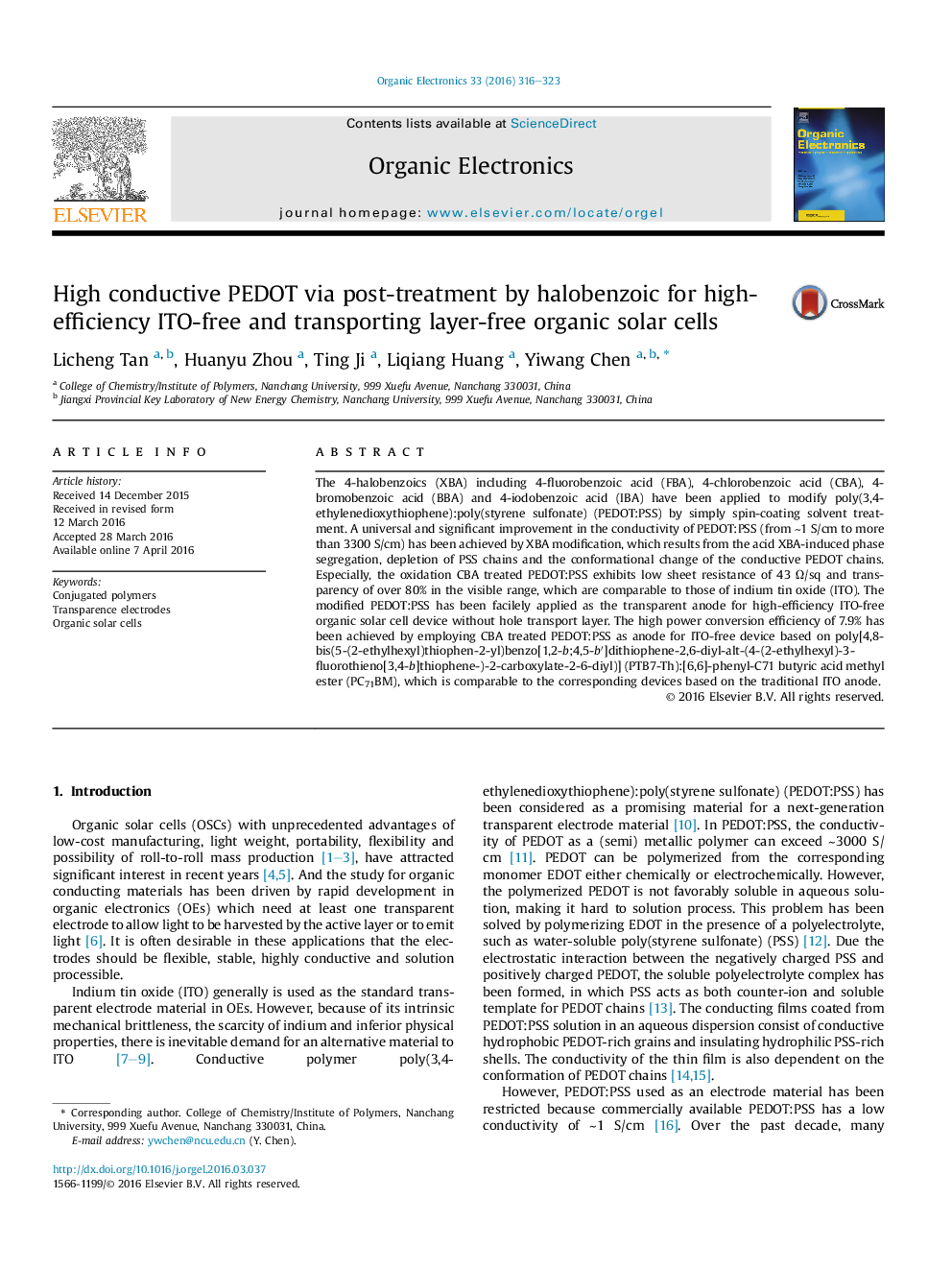| Article ID | Journal | Published Year | Pages | File Type |
|---|---|---|---|---|
| 1264247 | Organic Electronics | 2016 | 8 Pages |
•Highly conductive, transparent PEDOT:PSS modified by halobenzoic has been prepared.•The CBA-treated PEDOT has sheet resistance of 43 Ω/sq and transparency of over 80%.•CBA-induced conformation changes for PEDOT are main mechanism for the conductivity.•Transporting layer-free OSCs with electrodes as anode shows efficiency of 7.9%.
The 4-halobenzoics (XBA) including 4-fluorobenzoic acid (FBA), 4-chlorobenzoic acid (CBA), 4-bromobenzoic acid (BBA) and 4-iodobenzoic acid (IBA) have been applied to modify poly(3,4-ethylenedioxythiophene):poly(styrene sulfonate) (PEDOT:PSS) by simply spin-coating solvent treatment. A universal and significant improvement in the conductivity of PEDOT:PSS (from ∼1 S/cm to more than 3300 S/cm) has been achieved by XBA modification, which results from the acid XBA-induced phase segregation, depletion of PSS chains and the conformational change of the conductive PEDOT chains. Especially, the oxidation CBA treated PEDOT:PSS exhibits low sheet resistance of 43 Ω/sq and transparency of over 80% in the visible range, which are comparable to those of indium tin oxide (ITO). The modified PEDOT:PSS has been facilely applied as the transparent anode for high-efficiency ITO-free organic solar cell device without hole transport layer. The high power conversion efficiency of 7.9% has been achieved by employing CBA treated PEDOT:PSS as anode for ITO-free device based on poly[4,8-bis(5-(2-ethylhexyl)thiophen-2-yl)benzo[1,2-b;4,5-b′]dithiophene-2,6-diyl-alt-(4-(2-ethylhexyl)-3-fluorothieno[3,4-b]thiophene-)-2-carboxylate-2-6-diyl)] (PTB7-Th):[6,6]-phenyl-C71 butyric acid methyl ester (PC71BM), which is comparable to the corresponding devices based on the traditional ITO anode.
Graphical abstractFigure optionsDownload full-size imageDownload as PowerPoint slide
